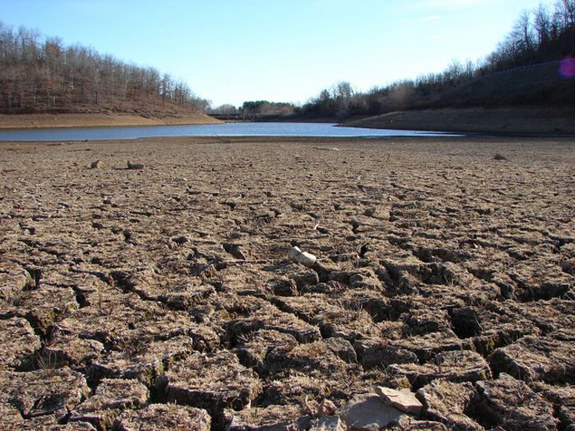Extreme Heat Linked to Global Warming

As relentless heat wave has followed relentless heat wave across the United States this summer, conversations have increasingly turned to the role of global warming in extreme weather events. A new study solidifies the link.
Before 1980, excessively hot summers were practically non-existent. More recently, found a new study, summers that averaged 3.3 degrees Fahrenheit hotter than normal have become common – covering about 10 percent of land area around the globe each year – up from an average of just a few tenths of a percent in the 1950s, 60s, and 70s. In some recent years, super-hot summers have struck as much as 20 percent of the Northern Hemisphere.
Statistically, the pattern is too extreme to be considered a result of chance, found a new study, which pointed a finger directly at global warming as the underlying cause of the recent spike in extra-hot summers.
PHOTOS: Predators Stalking America Again
With projected warming over the next 50 years, the study predicted that summers averaging 5.5 Fahrenheit above normal will happen regularly. In a decade, nearly 17 percent of the globe will likely be experiencing scorching summers each year.
“The problem is that there’s always this caveat when people say, ‘Well, you can’t blame any individual event on global warming,’” said James Hansen, a climate scientist at the Goddard Institute for Space Studies in New York.
“But what we show is that you can blame this strong change in the bell curve (of temperature distributions) on global warming. And that change has really made a remarkable impact on the chance of the likelihood of extreme weather events.”
Get the world’s most fascinating discoveries delivered straight to your inbox.
High-profile summer heat waves have fueled headlines around the globe in recent years. The historically hot summer of 2010 from Moscow to the Middle East was followed by a record-setting summer in Texas, Oklahoma, and Mexico in 2011. The summer of 2012 has already strained air-conditioners across the Midwest and eastern United States.
BIG PIC: What's Behind The Record Heat?
Scientists often come up with meteorological reasons, including high-pressure systems and La Niña events, to explain individual heat waves. In an effort to see if there might be any larger trends, Hansen and colleagues analyzed seasonal temperature averages around the globe dating back to 1950.
When the researchers compared the period between 1951 and 1980 with the period since 1980, they found that average temperatures shifted toward the warmer in the latter period.
Even more striking, the team reports today in the journal Proceedings of the National Academy of Sciences, anomalously hot summers – defined by average temperatures that were three standard deviations or 3.3 F hotter than normal – became far more common in recent decades. Hot summers directly raise the risk of damaging wildfires and devastating droughts.
Overall, the study found, temperatures are becoming more variable with more extremes at both ends, making cooler-than-average summers likely to happen in the coming years, as well. Global warming also increases levels of water vapor in the air, raising the likelihood of extreme snowfall, rainfall, and flooding in some places.
Those kinds of patterns can be confusing to a public that tends to take global warming more seriously when they are living through unusually warm weather.
ANALYSIS: Summer Heat Screws Over Sensible Shoppers
“We increasingly think that one of the biggest determinants of whether people think climate change is real or not, or whether they think it’s severe or moderate, is their relatively recent experiences with local weather,” said Barry Rabe, a political scientist who studies environmental and energy policy at the University of Michigan, Ann Arbor.
For the past five or six years, Rabe and colleagues have been conducting nationwide polls to gauge the public’s attitudes toward climate change. Their results suggest that concern peaks during heat waves and wanes during cooler-than-normal seasons.
Policy changes also tend to happen not when scientists announce a rise in global average temperatures, but when an area faces some kind of imminent threat that is related to climate change. An infestation of mountain pine beetles as a result of warmer winters in British Columbia, for example, had a direct impact on the creation of a major carbon tax there.
The new study, then, may come at an opportune time – as long as the weather remains wiltingly hot.
“Generally, in public policy and environmental policy, the thinking is that things have to be pretty significant and severe in a vivid way for people to become concerned and governments to react,” Rabe said.
“Normally, we have seen major policy changes follow some kind of disaster, he added. “One of the big challenges with climate change is figuring out what is the crisis, what is the burden of proof, and what is the demonstrable evidence.”
This article was provided by Discovery News.


